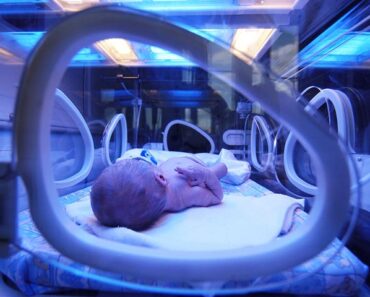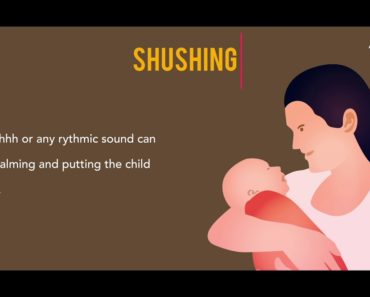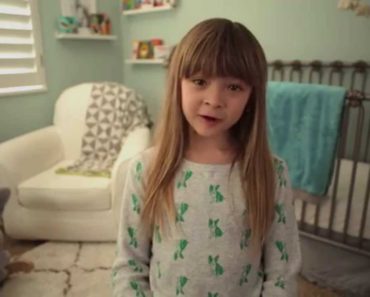Craniosynostosis is a birth defect where the cranial sutures (fibrous joints between skull bones) are permanently fused. Usually, the skull bones are not fused in infants, and it allows for brain growth. Permanently fused skull bones before brain growth could result in a deformed appearance of the head.
Read this post to know more about the symptoms, causes, types, complications, diagnosis, and craniosynostosis treatment in babies.
Symptoms Of Craniosynostosis
The signs and symptoms of craniosynostosis can be observed at birth and in the first few months of life. The severity and the head shape may vary depending on brain development and how many sutures are permanently fused. A baby born with completely fused sutures is likely to have more severe signs than a baby who develops permanent sutures a few months later in life.
The following signs are often noticed in craniosynostosis (1).
- Misshapen skull, the shape may vary depending on which suture is involved and the time of fusion.
- Lack of soft spots on the skull.
- Early disappearance of soft spots (fontanelle).
- The suture may look raised or ridged.
- Head may not grow as the baby grows.
Symptoms and signs of increased intracranial pressure are also seen in some babies. These may include (1):
- Noticeable scalp veins
- Excessive sleepiness
- Irritability
- Bulging or full fontanelle (soft spot)
- Feeding problems
- High-pitched cry
- Increased head circumference
- Vomiting
- Inability to move eyes upward
- Seizures
- Developmental delays
- Bulging eyes
If you notice any of these signs, seek a pediatric evaluation for early diagnosis and treatment. Babies’ brains grow faster, and a fused skull can obstruct and affect their brain development.
Causes Of Craniosynostosis
The exact cause may not be known in many cases, and in such cases, it is called non-syndromiccraniosynostosis. It is thought to be caused by a combination of environmental and genetic factors.
If craniosynostosisis related to a genetic disorder, then it is called syndromiccraniosynostosis. This may occur due to genetic syndromes affecting a baby’s skull development, such as Apert syndrome, Crouzon syndrome, or Pfeiffer syndrome (2).
Note: Misshapen heads may also occur due to other causes, such as a baby lying on the same side may develop flattening of the head. A cranial orthosis (helmet therapy) and position changes could help reshape the head in these cases.
Types Of Craniosynostosis
Craniosynostosis can be of different types depending on the suture affected. Most babies have a permanent fusion of single suture. Some babies may have multiple sutures involved, and this may often be seen in syndromiccraniosynostosis, which is caused by genetic disorders.
The types of craniosynostosis are (3):
- Sagittal synostosis: It is the early fusion of sagittal suture, that is, the suture present from the front to the back of the skull. This is the most common type and results in a head shape known as
- Coronal synostosis: Coronal sutures are from each ear to the top of the skull. The premature joining of coronal sutures could cause the eye socket to bulge and the nose to turn on the affected side. If the condition is unicoronal (one side is fused), the skull’s affected side may look flat, and the other side will have a bulged appearance. Head may look short and wide in bicoronal (both sides are fused), and the forehead can often be tilted forward.
- Metopic synostosis: The suture from the nasal bridge passing through the middle of the forehead to wards the sagittal suture is called a metopic suture. The early fusion of metopic suture may cause trigonocephaly, a triangular appearance of the forehead with a broad backside of the skull.
- Lambdoidsynostosis: The lambdoidsutureislocated along the back of the skull. This is a rare type of synostosis and causes one-sided flattening and tilting of the head. Ears may appear on different levels due to this condition.
Plagiocephaly or flat head syndrome is the flattening of the skull on one side. This can be seen in coronal and lambdoidsynostosis.
Diagnosis Of Craniosynostosis
Physical examination of the baby’s head could help identify the suture ridges, skull, and facial abnormalities. The following tests are also done for the diagnosis of craniosynostosis (4).
- Imaging tests, such as computerized tomography (CT) scan and magnetic resonance imaging (MRI), help identify the skull shape and visualize the sutures.
- Genetic testing is recommended for babies who have signs of genetic syndromes.
Evaluation of experts, such as a pediatric neurosurgeon and plastic and reconstructive surgery specialist, is needed to diagnose and treat craniosynostosis in babies.
Treatment Of Craniosynostosis
Surgery is the initial treatment for most babies who have a premature fusion of cranial sutures. The time and type of surgery are chosen depending on the type of craniosynostosis and underlying genetic disorders.
The surgical procedures for the treatment of craniosynostosis may include (5):
- Endoscopic surgeries are done for babies younger than six months. Surgeons may insert an endoscope through small incisions on the scalp and remove the fused sutures. A night’s hospital stay and no requirement of blood transfusion are advantages of the endoscopic procedure. Molded helmets are used to shape the skull after opening the sutures.
- Open surgeries are preferred for babies older than six months. Surgical reshaping of the skull is done using absorbable screws and plates. Open surgery requires three to four-day hospitalization and blood transfusions. It is a more complex procedure, and many babies may require several surgeries to correct the distorted head shape.
Some babies may require multiple surgeries to maintain normal brain growth and head shape. Surgical procedures also help to reduce intracranial pressure.
Complications Of Craniosynostosis
Untreated craniosynostosis may result in the following complications (6).
- Permanent facial deformations
- Permanent head deformations
- Poor self-esteem
- Social isolation
The smaller skull could cause an increase in intracranial pressure while the brain grows. This may lead to:
- Developmental delays
- Lethargy
- Cognitive impairment
- Seizures
- Blindness and eye movement problems
If left untreated, increased intracranial pressure could be fatal.
Learning about craniosynostosis and opting for the right treatment at the right time could provide better outcomes. You may consult a pediatrician if you suspect that your baby’s skull is misshapen or is growing abnormally. Early interventions could help avoid life-long complications of craniosynostosis and improve the quality of a baby’s life.

































